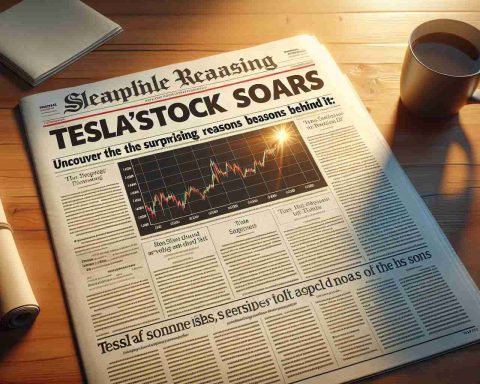Technology is constantly transforming various industries, and the real estate sector is no exception. The development of advanced virtual reality (VR) technology has revolutionized the way properties are viewed and marketed. Gaussian VR, a groundbreaking AI technology developed by Metareal Corp., is set to take the real estate industry by storm.
Gaussian VR offers a 3D real estate property-viewing solution that goes beyond traditional VR experiences. Unlike previous methods that involved stitching panoramic images together, Gaussian VR constructs the entire environment in 3D using Gaussian Splatting technology. This means that users can freely explore and walk around a property, providing a truly immersive viewing experience.
The best part is that Gaussian VR doesn’t require specialized equipment. All it takes is a smartphone to record footage, which is then automatically transformed into an immersive VR environment in just a matter of minutes. This innovative solution eliminates the need for multiple in-person property visits and allows users to view every detail without limitation.
Gaussian VR not only revolutionizes the way property viewings are conducted but also addresses labor shortages in the real estate industry. By streamlining the viewing process, it alleviates the burden on sellers, agents, and brokers, making their jobs more efficient and effective.
The benefits of Gaussian VR extend to all stakeholders involved in the real estate industry. Sellers can attract potential buyers more effectively by showcasing their properties in a cutting-edge and practical manner. Agents and brokers can differentiate themselves from competitors by offering advanced technology that enhances the customer experience. And potential buyers can view properties from anywhere, using any device.
Metareal Corp. remains at the forefront of AI technology, constantly pushing the boundaries of what is possible. As Goushi Yonekura, the CTO of Metareal Corp., stated, “Gaussian VR is a groundbreaking AI technology that generates 3D environments very quickly. We will continue to contribute to society through advanced technology with diverse industrial applications.”
With the release of Gaussian VR’s limited beta version, the real estate industry can embrace this transformative technology and redefine the way properties are viewed and marketed. The future of real estate is here, and it is immersive, efficient, and accessible thanks to Gaussian VR.
Additional facts:
1. Gaussian VR is not limited to residential properties. It can be used for commercial real estate, vacation rentals, and even virtual staging of empty properties.
2. The use of Gaussian Splatting technology in Gaussian VR allows for accurate depth perception and realistic representation of spaces, enhancing the user experience.
3. In addition to the immersive viewing experience, Gaussian VR also offers interactive features such as the ability to measure distances within the virtual environment and leave comments or annotations on specific areas of the property.
4. The real estate industry is not the only sector benefiting from advanced VR technology. Other industries such as architecture, interior design, and tourism are also utilizing VR to enhance their practices and experiences.
5. Some companies are even exploring the use of virtual reality for remote property inspections, allowing experts or buyers to assess properties without physically being present.
Key questions and answers:
Q: What equipment is needed to use Gaussian VR?
A: Gaussian VR only requires a smartphone to record footage. No specialized equipment is necessary.
Q: Does Gaussian VR support multiple platforms?
A: Yes, Gaussian VR is compatible with various devices and platforms, allowing users to view properties using smartphones, tablets, or even virtual reality headsets.
Q: Can Gaussian VR be used for international property viewings?
A: Yes, Gaussian VR eliminates the need for in-person visits, making it convenient for potential buyers to view properties from anywhere in the world.
Key challenges or controversies:
1. One potential challenge is the learning curve associated with adopting VR technology. Real estate professionals may require training and technological assistance to fully utilize Gaussian VR and integrate it into their workflow.
2. Privacy concerns may arise, as virtual property viewings involve sharing detailed information about properties online. Ensuring the security of sensitive data and protecting against unauthorized access becomes crucial.
Advantages of Gaussian VR:
1. Saves time and cost: Gaussian VR eliminates the need for multiple in-person property visits, saving time and travel expenses for both buyers and sellers.
2. Increased accessibility: Potential buyers can view properties remotely, eliminating geographical barriers and making it easier for international or out-of-town buyers to participate in the property market.
3. Enhanced visualization: Gaussian VR provides a realistic and immersive viewing experience, allowing potential buyers to get a better understanding of the property layout, size, and features.
Disadvantages of Gaussian VR:
1. Lack of physical experience: While Gaussian VR enhances the virtual viewing experience, it cannot completely replace the experience of physically walking through a property and assessing it in person.
2. Technical limitations: The quality of the VR experience depends on factors such as video resolution, internet connection, and device specifications. Technical issues may arise, affecting the overall user experience.
Related links:
1. Metareal Corp.: The official website of Metareal Corp., the company behind Gaussian VR, provides more information about their products and services.
2. realtor.com: A popular real estate listing website that offers a virtual reality feature for some properties. It showcases how VR technology is already being used in the real estate industry.



















